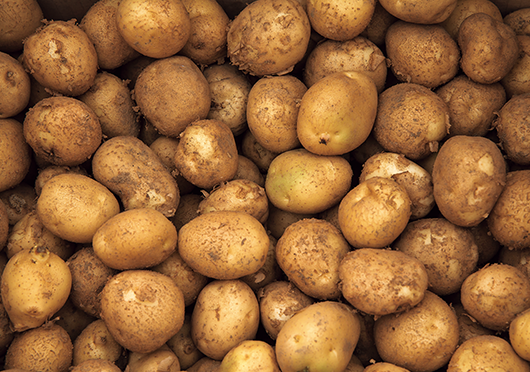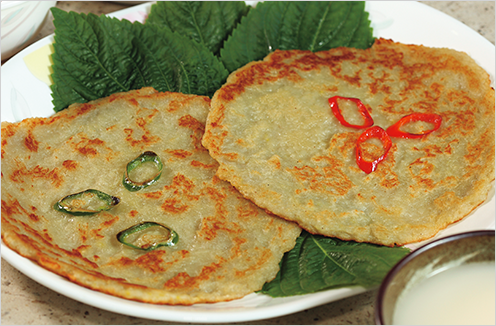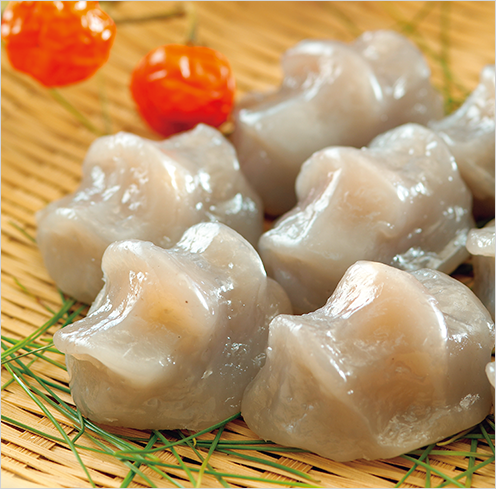With its exceptional nutritional value and genetic diversity, the potato is an excellent substitute for rice, the staple of Korean cuisine, but it also makes for a great side dish or snack. How did the potato spread from its native region in South America to Europe and China, and how was it then introduced to Korea?
Women dig potatoes in a field in Taebaek, Gangwon Province. The largely mountainous province is where most of Korea’s potatoes are grown, which are harvested between late June and the end of August.
Rough and crude, their body proportions are all wrong. The scene is nearly cartoonish. I’m talking about Vincent van Gogh’s oil painting “The Potato Eaters.” At first, this work received little attention. But van Gogh, who followed Jean-François Millet in making the life of poor peasants an important theme in his work, considered the painting his first ambitious work.
Wheat, rice and barley are sometimes deceptive. Though the seeds are sown in the soil, the grains later hang from stems high above the ground. Covered by golden crops at harvest time, the soil that raised them is invisible. By contrast, the potato is honest. It is buried in the soil and harvested from the soil. The farmers sitting around under a small light and eating potatoes are thus truthful. Their knuckles are thick from digging the soil and their faces dark brown like the unpeeled potatoes. They deserve to eat the steaming potatoes that still smell of soil.
Those farmers in van Gogh’s painting appear dignified and satisfied, but initially, the potato was not welcomed as food when it was introduced to Europe in the 16th century from the Andes of South America. Like van Gogh’s work, which is now deemed one of his masterpieces, it took potatoes quite a long time to spread widely and become loved.
The potato is a nutritious vegetable. In addition to ample carbohydrates, it also contains numerous minerals, such as potassium, magnesium and manganese, along with nutrients, such as folic acid, Vitamin B1 and B6, and dietary fiber. Notably, if eaten as a staple, the lowly potato contains enough Vitamin C, albeit less than many fruits, to prevent scurvy. Although the vitamins were yet to be discovered, governments and scientists of 18th-century Europe knew of the nutritious value of potatoes. Frederick II of Prussia, known as the “Potato King,” and Antoine-Augustin Parmentier, the pharmacist who eagerly spread the potato in France, were big promoters of potatoes in their time.
Spread by Famine

Potatoes, which originated in the Andes of South America, are a nutritious food rich in carbohydrates and also a source of fiber, along with minerals, folic acid and vitamins. The vitamin C in potatoes remains intact even when they are cooked at high temperatures.
However, the farmers who were destined to actually eat the potatoes were cautious about the new crop at first and resisted eating it. Some believed rumors that potatoes caused diseases such as tuberculosis, leprosy and cholera, and refused to even touch them. The fact that they could not make bread from potatoes also played a role in their avoidance of the crop. A lot of time and effort were required before European farmers realized the value of the potato and accepted it as an important crop. When famine hit, the problem was easily solved and the cultivation of potatoes quickly spread.
In Korea, the potato was introduced in the early 19th century. The Chinese who came to seek wild ginseng brought potatoes with them and planted them in Korean soil. Around this time, Jean Anthelme Brillat-Savarin, a French gastronome, bequeathed to us his famous aphorism: “Tell me what you eat, and I will tell you what you are.”
This statement was valid in his time because there was a great difference between the food eaten by poor, low-class farmers and by the rich, upper class.
What food people could eat was decided by their status and social class. However, the food culture of a country is more clearly understood through how food is eaten rather than what kind of food is eaten. Though both Europeans and Koreans eventually accepted potatoes as food, they eat them in completely different ways.
While Europeans tried in the past to use potatoes to make bread, one of their staple foods, in modern Korea potatoes have come to be consumed in either one of two ways: as a substitute for rice or as a side dish to accompany rice. In times of grain shortages, steamed or boiled potatoes were a substitute for rice, and in the mountainous province of Gangwon, where growing rice is difficult, potatoes were grown and eaten in large quantities. So today, those traveling through the region will often encounter local potato dishes, such as ongsimi (potato ball soup) and gamja ddeok (potato cakes), that are less common in other areas of the country.
However, the potato, called gamja in Korean, is more commonly used today in making side dishes to eat with rice. Gamja jorim, potato cut into bite-sized cubes and boiled down in soy sauce with other ingredients; gamja tang, a stew cooked with pork ribs, vegetables and whole potatoes; and doenjang jjigae, soybean paste stew with potato cubes and other vegetables - all of these are eaten with rice. Interestingly, there is a dish made of julienned, stir-fried potato strips called gamja namul. Namul generally refers to edible grasses and leaves which are eaten boiled, stir-fried, or raw, mixed with condiments. The stems and leaves of potatoes cannot be eaten in this way, however. Belonging to the solanaceae family, or nightshades, the potato contains toxic glycoalkaloid compounds in its green stem and sprouts, which cause diarrhea, vomiting and stomachache, and in the worst case can lead to hallucinations, paralysis and even death. Stir-fried potato strips are probably called “namul” because the dish is eaten as an accompaniment to rice.
The food culture of a country is more clearly understood through how food is eaten rather than what kind of food is eaten. Though both Europeans and Koreans eventually accepted potatoes as food, they eat them in completely different ways.
Consumption Based on Rice

The potato pancake, made with grated potatoes and pan-fried until golden brown, is popular as a snack or an accompaniment for drinks. In Gangwon Province, only grated potatoes are used but in other areas, vegetables such as chives, carrots, onions and mushrooms are added.
For the reasons mentioned above, greenish potatoes must be avoided. Potatoes turn greenish when damaged or exposed to sunlight as the chlorophyll in the potato starts to form, also indicating the presence of the toxic glycoalkaloid solanine. Since solanine does not disappear even when heated, the greenish parts have to be cut out. However, while harmful to humans, solanine is beneficial for the potato itself, protecting it from bacteria and mold and from consumption by animals.
The traditional inhabitants of the Andes had already lowered the toxicity of wild potatoes and bred and cultivated them, enabling people in countless places around the world to taste the precious tuber crop. Moreover, they had even discovered that the toxicity could be reduced if the potatoes were eaten together with soil. According to Timothy Jones, professor of nutritional science at McGill University in Canada, the soil of the Andes contains components that neutralize potatoes’ toxicity when combined with their natural toxic components.
The Andean natives made a freeze-dried food called chuño. This was another way of reducing the toxicity of the bitter potatoes (papa amarga) they ate. The potatoes are frozen by the cold night air on the highlands at an elevation of 3,500 meters, and then exposed to the intense sunlight during the day to be dried for long-time preservation. Made in this way, chuño can be preserved for up to 20 years.
However, when a food ingredient is transferred from one side of the world to the other, cooking and processing methods rarely follow. For example, when potatoes were eventually introduced to Ireland via Spain and Italy, the ways of cooking and processing them were not.
Different Varieties, Different Tastes

Potato cakes are a local specialty of the mountainous Gangwon Province. Made of potato starch dough with mung bean filling, the steamed cakes have a delicate flavor and soft, chewy texture.
If the preservation techniques used by South Americans to make chuño had been transferred to Ireland, the tragic population reduction by half would not have occurred when the potato blight broke out in the mid-19th century. But the Irish had only received the potatoes, not the knowhow of South American farmers. Moreover, the potatoes adopted in Ireland were of only one kind, called “lumpers,” which meant potatoes up and down the country had the same genetic structure, leaving all of them vulnerable to the blight. As a result, the disease destroyed 90 percent of all potatoes within two years. This would never have happened in the Andes, home of the potato, for the inhabitants of the highlands cultivated many different varieties to enjoy their distinctive tastes.
According to research conducted in 1995, an average of 10 to 11 kinds of potatoes were grown on each farm in Peru, and the International Potato Center in Lima stores seed potatoes of about 5,000 varieties. Nowadays, the probability of repeating Ireland’s calamity is very low anywhere in the world. We are greatly indebted to the people of the Andes, as we live in a world where potatoes are widely cultivated, a crop that more than a billion people around the world eat every day, making it the third most important crop after rice and wheat.
Today, more than 30 potato varieties are grown in Korea, and generally, they are divided into two categories according to their texture after cooking.
Starchy or mealy potatoes contain more starch and break easily when cooked, while creamer or waxy potatoes contain less starch but more moisture and become harder when cooked. In Korea, the most popular variety has been the sumi (“superior”) potato, whose characteristics fall somewhere in the middle. Recently, however, the demand for a greater variety of potatoes has grown, indicating that the wisdom of the farmers of the Andes has finally followed the potato to Korea.
Jeong Jae-hoonPharmacist; Food Writer